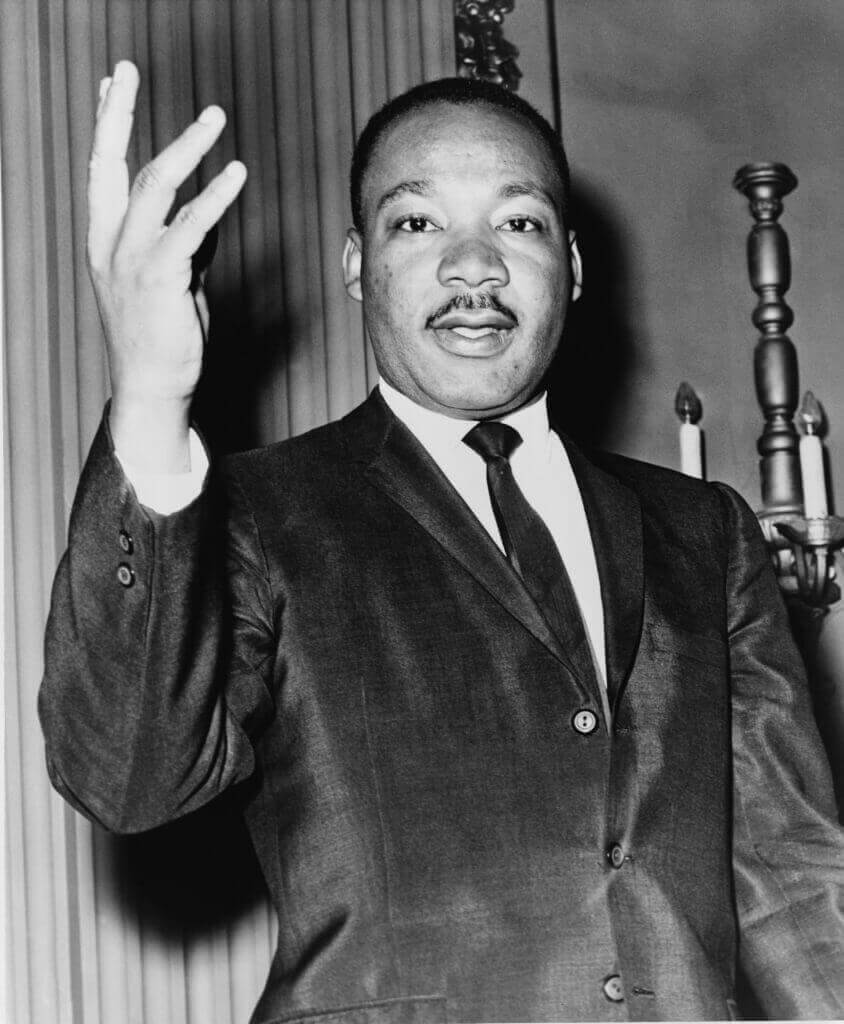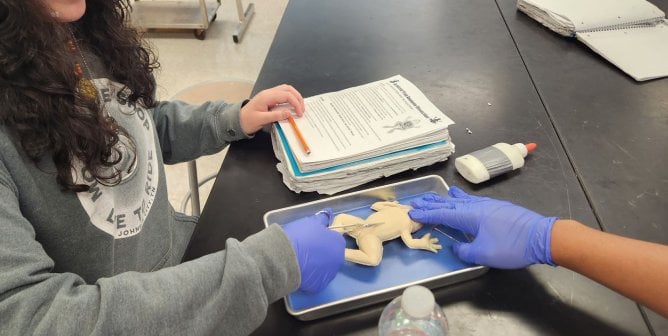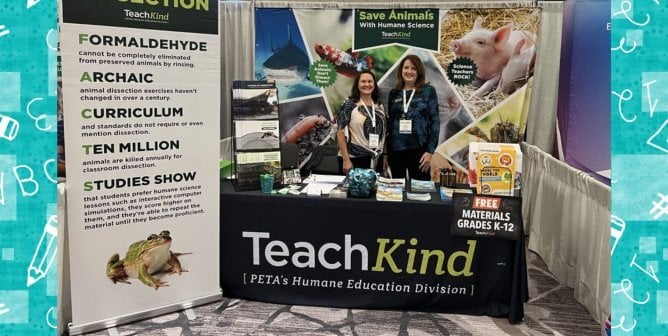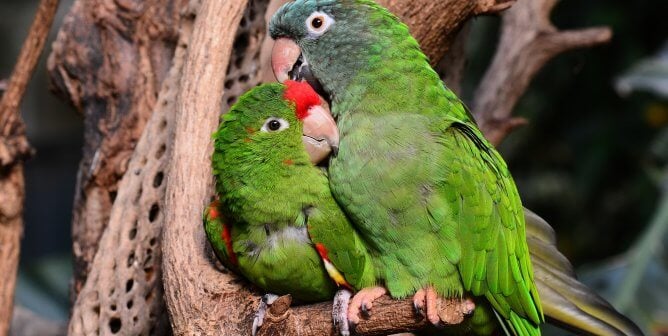Learning Compassion From Martin Luther King Jr.
This lesson plan is designed to help teachers present animal rights issues to their students. If you’re an educator, please feel free to adapt this material to fit your needs, and contact us if you need help incorporating this activity into your curriculum.
Suggested grade levels: 3rd-8th
Objectives: Identify some goals of the civil rights movement and Martin Luther King Jr.’s teachings while understanding the similar goals of the animal rights movement; participate in a collaborative conversation with classmates and listen to the thoughts and opinions of others; develop empathy for animals and other people
Explain that Dr. King used peace to oppose discrimination, and discuss the ways in which some people are discriminated against. Then explain that animals also face discrimination and abuse and that that’s why there are people who speak up for them, too.
Choose a few (or all) of Martin Luther King Jr.’s quotations below to read together with your students, and then discuss what they mean and how you can apply the underlying principle in daily life. Reflect on why it’s important to speak out against racism and oppression in it all its forms.
Never Be Silent
“In the end, we will remember not the words of our enemies, but the silence of our friends.”
“There comes a time when one must take a position that is neither safe, nor political, nor popular, but he must take it because his conscience tells him that it is right.”
Use these quotations to discuss why it’s important to speak up when it comes to injustice. Whether kids are being bullied on the playground or a friend says his or her parents hit the family dog, let students know that if they know that an injustice is happening to anyone, they should tell an adult immediately. Ask them to write about or share aloud a time when they saw something sad happening to another person or an animal and how they reacted then vs. what they would do now.
“Never forget that everything Hitler did in Germany was legal.”
If you work with fourth-, fifth-, or sixth-grade students who have studied the Holocaust, show them this quotation to put things into perspective. Sometimes, as Dr. King had to remind people, there is a difference between what is morally right and what is legal. Talk to the class about how, at one time, it was legal to keep African-Americans as slaves and segregate public establishments and that people of color haven’t always had the right to vote. Dr. King was addressing these very injustices in his teachings. Today, we see inequality in many ways, including in the way we treat animals. It’s legal to abuse and kill certain animals to make food and clothing, test makeup and body products, and entertain humans. Have students reflect on the way society views animals, and write a paragraph about how they think this might change over the next 50 years.
Why Fight for Justice?
“Injustice anywhere is a threat to justice everywhere.”
“Whatever affects one directly, affects all indirectly.”
Explain to your students that just because something bad and unfair is happening to another person or animal and not to oneself doesn’t mean it doesn’t matter. All people and all animals feel pain, sadness, fear, happiness, and joy in much the same way. We all want to be with our families and friends, live our lives freely, and make our own choices. That’s why it’s important to fight against ALL suffering and treat others—including animals—the way we want to be treated. Ask students to write a paragraph about a time when they could tell that animals had emotions.
Taking Action for Animals
“The time is always right to do what’s right.”
“Life’s most persistent and urgent question is, ‘What are you doing for others?’”
We make choices that affect other beings all the time. Talk to students about what they can do to help animals in the community, such as volunteering at a local open-admission animal shelter or donating old blankets or dog and cat toys to animals in need. Also discuss how lifestyle choices, such as eating less meat, never visiting the circus, and buying cruelty-free products can help animals. Have kids write a list of three ways they hope to help animals and three ways they hope to help people before the end of the school year.





